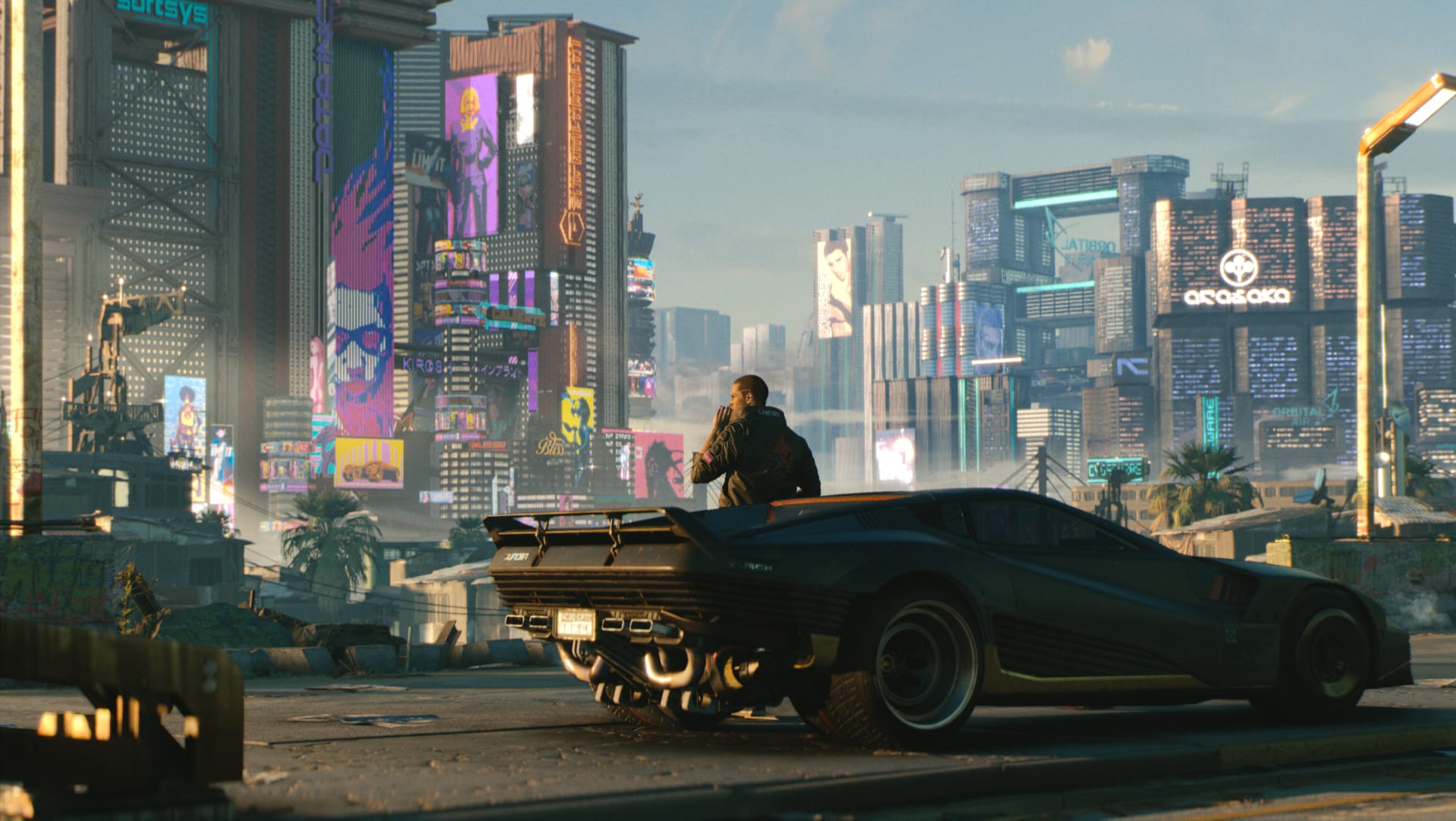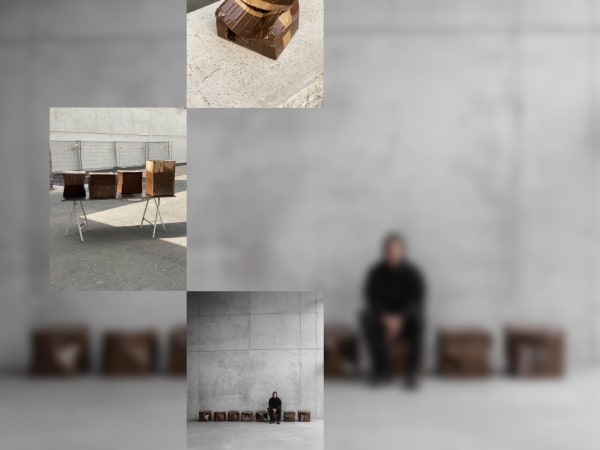

Plunging into Cyberpunk 2077’s Open World Dystopia
Featuring a soundtrack by Grimes and an in-game appearance by Nina Kraviz, the game's release was highly anticipated, but does it live up to the hype?
I walked into the back of a disorienting, cloudy, neon-lit bar. “Something to take the edge off?” uttered an unfamiliar voice, before I was offered the option to “knock it back.” Naturally, I obliged. In a matter of minutes, I was thrown prostrate on the ground, surrounded by squad cars with a gun in my face. To be fair, I deserved it, having naively accepted a job to steal a luxury car to pay off a debt for the friend who’d offered me the mystery drink.
I had been hyped from the first time Cyberpunk 2077 finish downloading onto my hard drive, but this was when it really hit me: I was finally in Night City, and my destiny in its derelict metropolis was up to me. I’d been waiting two years for this. Many waited seven.
Cyberpunk’s sensory overloading world, while created over the better part of the last decade by infamous Polish developer CD Projekt Red, feels like the culmination of over 40 years of narrative and aesthetic development. Cyberpunk the genre, widely credited to novelist William Gibson, pairs neo-noir narratives centered around low-life heroes (much like 2077’s V, the player-controlled protagonist) with the anxiety of an ’80s imaginative attitude toward technology. Novels like Gibson’s Neuromancer and Do Androids Dream of Robot Sheep? by Philip K. Dick—which inspired one of the most important films in the genre, Ridley Scott’s Blade Runner—laid the groundwork, while the work of Japanese artists like Katsuhiro Otomo, who created the pioneering manga and anime Akira, and Ghost in the Shell creator Masamune Shirow built out the genre’s robotic, claustrophobic aesthetics. Now-established cyberpunk tropes—like tricked-out futuristic weaponry, congested rainy streets, blinding mile-high advertisements, and, of course, Keanu Reeves—all pop up throughout the game, solidifying its place in the overarching cyberpunk canon.
This element will show content from various video platforms.
If you load this Content, you accept cookies from external Media.
The deeply-rooted sense of anxiety from these seminal works also seeps throughout Cyberpunk 2077, but there are a few notable differences. The game’s creators have stated that, while many of the genre’s touchstones create a vision of the future from the perspective of the ‘80s, Cyberpunk 2077’s vibe—from its grungy characters to its rave and industrial-influenced score—is a retro-futuristic reflection of the ‘90s. If you wanted to be nit-picky about it, you could even place the game in the same world as, say, Blade Runner, considering the original was set in 2019 Los Angeles, and its sequel only jumps forward to 2049. Give it a couple more decades, and the cyberpunk world would have likely grown tired of its ‘80s clothing and Vangelis scores. Now people have face piercings and like Trent Reznor.





This passage of time can also be tied to the state of the world we’re thrown into. Blade Runner based its perspective of the future on the questions of its era: The fear that people lose control of technology and can be overrun, the fear of constant surveillance, and the fear of dominating, tyrannical companies and governments in an accelerated, capitalist world. By 2077, the fear has subsided. Night City is a violent place controlled by private corporations and government officials that, combined, operate like a fascist regime. On the street level, gangs are in a constant turf war. Police are heavily armed and ruthless, but can also be bought and answer directly to executives. Everything is tracked and recorded, like the implants that monitor your health status and update you every time you wake up. And everyone is cybernetically enhanced, to the point that some fail to resemble humans at all and have more “components” than body parts. None of the characters I’ve spoken to in Night City are afraid; all of the nightmares have already come true. Now they’re just jaded.
All of these elements combine, however, to make Night City a deeply captivating, albeit dark, place to inhabit. After the first few hours, Cyberpunk turns you loose, and how you interact with the residents in Night City’s densely populated boroughs is up to you. The game excels in its sense of limitless exploration and freedom. From my early experiences hacking and infiltrating gang hideouts to the first time I visited the ripper doc (the game’s “doctors” who surgically install cybernetic, game-changing body modifications), I genuinely felt like I was going through a true-to-form cyberpunk world the way I wanted, without the linear confines of science fiction movies or novels.
This element will show content from various video platforms.
If you load this Content, you accept cookies from external Media.
Cyberpunk’s world is made all the more immersive by its music. While the game’s official soundtrack garnered an appropriately insane amount of hype due to its new original songs from the likes of Grimes, A$AP Rocky (above), Run the Jewels, and many more (including an in-game appearance from Nina Kraviz and a repackaged version of SOPHIE and Shygirl’s “Slime” by their in-game alias Clockwork Venus), I was more impressed with its exceptional score and the way it shifts and interlocks with the soundtrack’s more pop-structured moments. In an early mission within the game, I was sent to rescue a woman who had been kidnapped by a gang. Silently weaving past the apartment block’s other residents inside their homes, I realized I was approaching the hideout when I felt the faint pulse of a kick drum through the wall grow into a raging alien techno track that only grew more aggressive as bullets started flying.
As we peeled out of the parking garage at the end of the mission, rain streaking across our windshield, the glare of neon ads temporarily blinding our view out of the car, the game’s somber atmospheric music shifted into rough-edged trap and reggaeton. These subtle, shifting musical moods breathe life into Night City, giving it the sense that all of this would still be happening even if I wasn’t playing. It’s hard to imagine the city ever going to sleep, even if you turn your console off.
Note that I said console. While CD Projekt Red deserves the extensive hype and accolades for delivering the story, the vibe, and the music driving Cyberpunk 2077, I have to be brutally honest. I’ll leave the aspect of gameplay and performance-driven reviews to those better equipped, but it would be a disservice not to mention the difference that I (as a console player using a PS4 Pro for my initial impressions) felt compared to those who reviewed the game on PC. On current-gen consoles, lag times and frame rate issues can be overwhelming. While I loved every moment of conversation, customization, and on-foot travel I experienced during the games slower moments, combat and driving posed significant control and display issues that, at best, made it difficult to navigate higher-energy passages, and at worst froze and forced me to restart my system (which happened during my first few hours with the game). This has been addressed by CD Projekt Red, but we’ll have to keep our fingers crossed for quick updates and bug fixes in the future.
This warning serves as a hope for the future, that the game’s beautifully-realized cyberpunk world will continue to grow and mature while getting smoothed out for console players. Cyberpunk 2077 is a gargantuan and stylish game with so much to offer (much of which has already impressed me and kept me playing) that it would be a shame if technical issues continued to pull us out of its deeply immersive world.
Cyberpunk 2077 is out now.
Zach Tippitt is an editor for Electronic Beats. Follow him on Instagram.
Published December 23, 2020. Words by Zach Tippitt.












Follow @electronicbeats